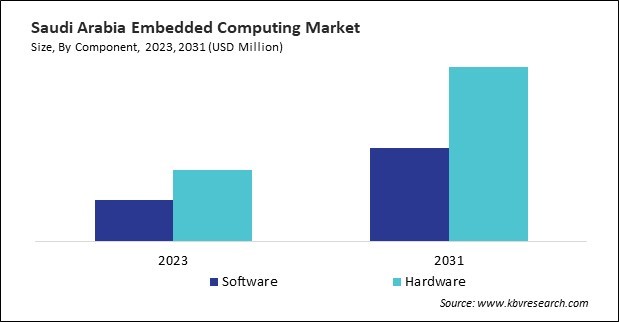According to a new report, published by KBV research, The Global Embedded Computing Market size is expected to reach $81.9 billion by 2031, rising at a market growth of 8.8% CAGR during the forecast period.
Embedded computing is used in a wide variety of industries for different purposes. Embedded computing systems are frequently used to control processes and devices. For example, embedded systems control manufacturing production lines, robotics, and automated machinery. Similarly, in the automotive industry, embedded systems manage vehicle control functions like braking, steering, and acceleration.

The Hardware segment led the maximum revenue in the Global Embedded Computing Market by Component in 2023, thereby, achieving a market value of $54.4 billion by 2031. This dominant position underscores hardware's crucial role in the embedded computing ecosystem, which encompasses microcontrollers, microprocessors, and system-on-chips (SoCs). These are integral to various applications, from consumer electronics to industrial automation and automotive systems.
The Consumer Electronics segment is growing at a CAGR of 7.7 % during the forecast period. This segment's substantial share is driven by the widespread adoption of embedded systems in various devices such as smartphones, tablets, smart TVs, and home automation products. These systems enable advanced functionalities and interconnectivity, which consumers increasingly demand. The rapid pace of innovation and the growing consumer appetite for smart and connected devices significantly contribute to the dominance of this segment.
The North America region dominated the Global Embedded Computing Market by Region in 2023, and would continue to be a dominant market till 2031; thereby, achieving a market value of $28.5 billion by 2031. The Europe region is anticipated to grow at a CAGR of 8.4% during (2024 - 2031). Additionally, The Asia Pacific region would witness a CAGR of 9.4% during (2024 - 2031).
By Component
By End User
By Geography
 Unique Offerings
Unique Offerings